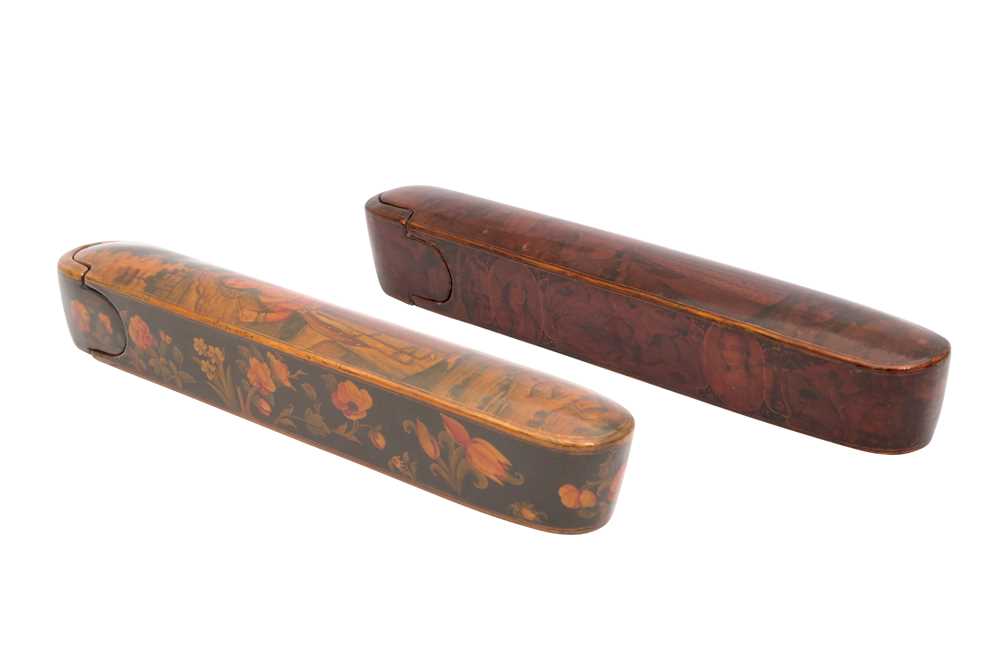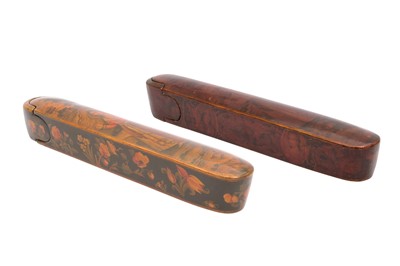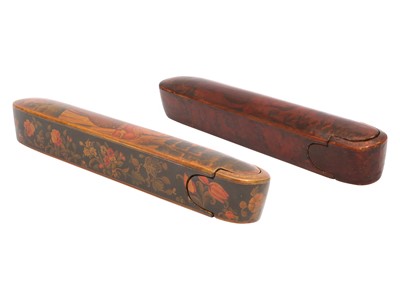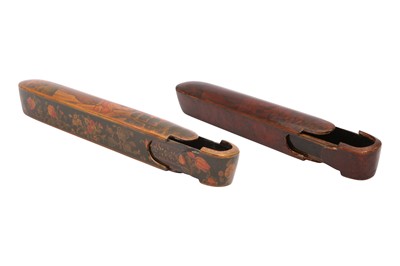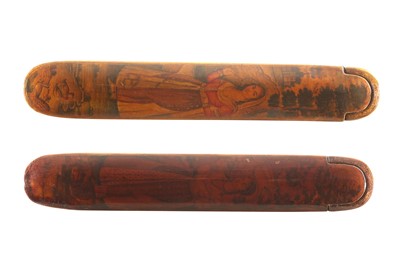29th Apr, 2022 11:00
Islamic Art - Property of a European Collector Part III
TWO LACQUERED PAPIER-MÂCHÉ PEN CASES (QALAMDAN) WITH STANDING PORTRAITS OF INDIAN MAIDENS
Qajar Iran, mid to late 19th century
TWO LACQUERED PAPIER-MÂCHÉ PEN CASES (QALAMDAN) WITH STANDING PORTRAITS OF INDIAN MAIDENS
PROPERTY FROM AN IMPORTANT EUROPEAN PRIVATE COLLECTION
Qajar Iran, mid to late 19th century
Each with rounded ends and sliding tray, lacquered, polychrome-painted and heightened in gold, the top of both pen cases painted with a vertical composition portraying a standing lady in Indian garb, holding a rounded parasol, strolling in the grounds of an estate beside a river, a peacock at her feet, one pen case with ducks and a castle in the background, the other without, the sides of one pen case with lobed cartouches with hunting scenes and villagers at work alternating with oval medallions of Qajar beauties and beaus' portraits, the other with a selection of floral bouquets and bushes, the sides of the sliding tray and the underside with gold rules on black ground on one pen case, and scrolling rosette sprays in gold on black ground on the latter, the longest 23cm.
Two analogous qalamdans repeating the same subject and composition, one of which signed Najaf 'Ali and dated to the mid-19th century, sold at Christie's London, 10 October 2013, lot 105, and 24 April 2015, lot 222.
All these pen cases, including ours, are very closely related to other two main examples in private collections, both of which are signed with Najaf 'Ali's takhallos 'Ya Shah Najaf' and date respectively 1259 AH (1843 - 44 AD) and 1270 AH (1853 - 53 AD). For further comparison, please see Mary McWilliams and David J. Roxburgh, Traces of the Calligrapher: Islamic Calligraphy in Practice, c. 1600-1900, 2007, fig. 44, p. 62, and Nasser D. Khalili, B.W. Robinson, and Tim Stanley, Lacquer of the Islamic Lands, Part Two, 1996, cat. 226, pp.31 - 33.
The considerable large number of qalamdans presenting the same subject with minor variations to the theme (e.g. with ducks, without ducks, the lady facing to the right or to the left) is indicative of not only the popularity of a genre or the high demand for a specific scene but also, and most importantly, the training of the artists, forced to repeat the work of the masters that preceded them in a form of manual 'mass-production'.
Sold for £4,000
Includes Buyer's Premium
Do you have an item similar to the item above? If so please click the link below to submit a free online valuation request through our website.
